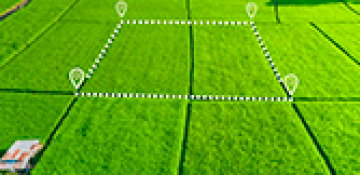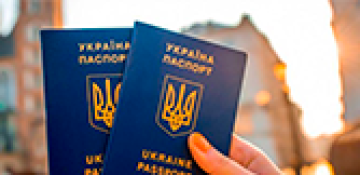I am studying in the third year of the State University of Economics and Technology.I specialize in contractual, economic and corporate law, in particular, I provide consultations and write articles.
An association
An association is a voluntary association of enterprises or individuals created for the purpose of coordinating their activities. Here is a more detailed explanation of the main aspects of this process:
The purpose of creating an association
- Coordination of activities: The association is created to coordinate the actions of participants in certain issues, such as determining product prices, developing new sales markets, and protecting the interests of members. Participants may have common interests or goals that require collective action to achieve, such as increasing competitiveness or introducing new standards.
- Lack of centralization of management: Association members maintain independence in their production and commercial activities. The association has no right to interfere in their daily activities or make decisions that would alter their autonomy. The board of the association has limited powers and its role is to coordinate, not to direct or control the activities of the members.
Question
What functions does the association perform?
Answer
The association may develop guidelines on pricing, technology standards, or other aspects relevant to the industry. The association can represent the interests of its members before state bodies, organize lobbying activities or influence legislative initiatives. An organization may coordinate joint projects or initiatives, such as market research, marketing campaigns, or joint procurement.
Question
Are there any limitations on the authority of the association?
Answer
The association cannot interfere in the management or commercial activities of the members, nor has the right to influence the internal decisions of enterprises. The functions of the association are limited to the coordination and support of common interests, without influence on the internal organization or management decisions of the members.
Management bodies of the association:
The management structure of the association includes several key bodies that ensure the functioning of the organization, its strategic management and current activities. Here is a detailed description of each of them:
- General meeting of association members: The general meeting is the highest governing body of the association and consists of all members of the association. This is the forum where the most important decisions affecting the activities of the association are made. Functions and powers: the general meeting approves the primary charter of the association, which regulates its activities, makes changes to the charter, if it is necessary to adapt to new conditions or needs, considers and decides on the issue of accepting new members to the association in accordance with the terms of the charter or founding agreement, determine or elect the executive body of the association, which can be collegial (for example, a board) or one-person (for example, a president or a director), according to the charter or agreement.
- Executive body of the association: The executive body is the body responsible for the management and administrative activities of the association within the limits of its statutory powers. It can be collegial or individual. Collegial executive body: Board or board of directors. A collegial body usually consists of several people who make decisions together. This may include strategic plans, management decisions, control over the implementation of decisions of general meetings, etc. Sole executive body: President, director or executive director. The sole executive body performs management functions independently, makes operational decisions and ensures the daily activities of the association. Functions and Powers: Considers and resolves issues related to the current activities of the association, including administrative and organizational issues. Ensures the implementation of the decisions of the general meeting and ensures the implementation of the strategic plans of the association. Makes decisions on current affairs of the association, for example, conclusion of contracts, financial management, personnel issues.
The rights of the enterprise-participant of the association
- Voluntary withdrawal from the association: The enterprise has the right to voluntarily withdraw from the association. The conditions and procedure for withdrawal are regulated by the founding agreement or the association's charter. Exiting typically requires certain procedures to be followed, such as filing a written notice of intent to withdraw, meeting deadlines set forth in the association's bylaws, and meeting financial obligations to the association (if any).
- Membership in other associations: The enterprise may be a member of other associations, if this does not contradict the law, the founding agreement or the statute of the association in which it is a member. Sometimes the articles of association may contain restrictions on membership in other associations, for example to avoid conflicts of interest or to ensure exclusivity.
- Receiving information: The enterprise has the right to receive from the association information related to its interests. This may include financial statements, minutes of meetings, information about plans and projects of the association. Information is provided in accordance with the established procedure provided by the charter or other internal documents of the association. Typically, this can be done through regular reports, meetings or written requests.
Association creation procedure:
- Development of an idea and planning: Formulate a clear purpose of creating an association, which can be aimed at coordinating the activities of participants, protecting common interests, or implementing joint projects. Develop a vision for the association, including an action plan, strategic goals, and functional responsibilities.
- Formation of founders: Gather a group of founders who will be members of the association. According to Ukrainian legislation, at least two legal entities or individual entrepreneurs are required to create an association. The founders can enter into a preliminary agreement on the intention to create an association, which will define the basic terms and conditions of creation.
- Approval of the charter and formation of governing bodies: Gather the founders to approve the association's charter at the constituent meeting. Choose the governing bodies of the association, such as the board, the audit committee, and define their powers.
- State registration: Submit the necessary documents for the registration of the association to the relevant state body. In Ukraine, this is usually done through the Centers for the Provision of Administrative Services (CSP). After checking the submitted documents and their approval, you will receive a certificate of registration of the association as a legal entity.
Lawyer services in the process of creating an association:
The lawyer services online when creating an association is important to ensure the correctness of all legal procedures and to avoid possible legal problems. A lawyer can provide support at every stage of creating an association. Here are the main types of legal services:
Lawyer consultation and legal analysis of the situation: A lawyers online will help determine whether the conceived association concept meets all legal requirements. They will assess the purpose and activities of the association and provide recommendations regarding its legal form. It will provide information on the rights and obligations of association members, in accordance with legislation and internal documents.
Services of a lawyer in the development of constitutive documents: The lawyer help will develop a statute that will include the name of the association, purpose, tasks, rights and obligations of participants, governing bodies, the procedure for making changes and liquidation. Checking the charter for compliance with the current legislation of Ukraine and other regulatory requirements.
Services of a lawyer during state registration: The lawyer will ensure the preparation and submission of all necessary documents for the registration of the association with state authorities (TsNAP). Assistance in registering the association with the tax authorities to obtain a taxpayer identification number (TIN).
Creating an association in Ukraine is a process that involves several key stages, each of which has its own requirements and procedures. Legal services provide comprehensive support at all stages of association creation — from the concept and development of documents to registration and further functioning. Their lawyer advice help to avoid legal mistakes and ensure the legitimacy and efficiency of the association's work.
Contact the legal marketplace CONSULTANT - we are always there to help you solve any legal problem. Leave your number and get legal assistance right now. Do not waste your time, our lawyers are already waiting for your call!




































